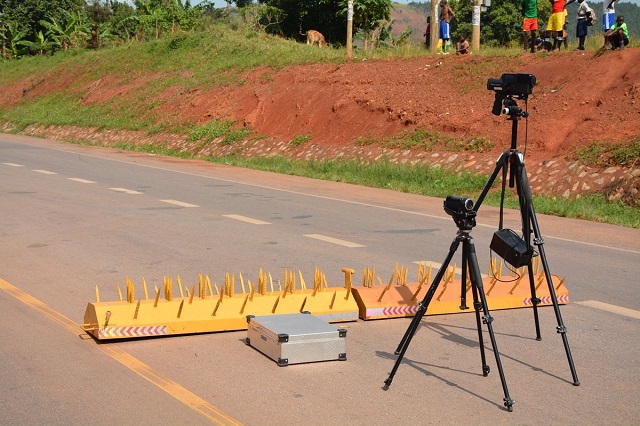
Kampala, Uganda | THE INDEPENDENT | There are up to 98 black spots on the North Eastern Road Corridor, a Road Safety Inspection report has revealed. The report was compiled by Safe Way Right Way, a non-governmental organisation involved in promoting road safety with support from World Bank.
Conducted between March and June this year, the Road Safety Inspection assessed the safety risks along the 340km Tororo-Mbale-Soroti-Lira-Kamdini road corridor. The study revealed 98 road black spots indicating that there is a road spot after every 3.5km.
The findings are based on geometric, traffic and accident parameters. Launched on Thursday at Hotel Africana in Kampala, the report shows that more accidents occur in trading centers, junctions, school zones, around bridges, weigh bridges and road side markets.
The study highlights the changing land-use at high-speed road sections as one of the key drivers of accidents. Dr. Godfrey Mwesige, a Road Safety Specialist and Senior Lecturer at Makerere University who led the study observes that the high proportion of bicycle and motorcycle traffic increases the risk of collision of traffic especially in trading centers and towns.
“There were also several cases of accesses created in a high-speed section on opposite sides, allowing unsafe crossing on both sides,” Dr. Mwesige said.
Available traffic accident statistics show a high frequency of collisions involving motorcycles at or close to trading centers. There are 28 recognizable major and minor trading centers of approximately 40km with posted speed limit of 50km per hour along the North Eastern Road Corridor.
Dr. Mwesige says the linear growth of trading centers, has turned major highways into streets, saying there is need for more humps to slow down traffic.
However, the findings of the study show that Tororo-Mbale-Soroti, and Lira-Kamdini sections have no humps in trading centers. “Majority of trading centers are at risk of high-speed collisions involving transit vehicles and pedestrians or motorcyclists. For example, Magodesi with no speed humps, data shows that nearly 50% of vehicles were exceeding the posted speed of 50km/hr,” reads the report.
The study also show that there were many obstacles including big trees, boulders and houses close to the road shoulder. This, the study says increases the severity of the accident in cases of loss of control or head-on collisions.
Traffic police officers at respective stations reported high fatal accidents at night attributed to rush driving. It was observed that visibility was most hampered by on-coming light glare and limited headlight range.
The study recommends that “Since drivers are more likely to overdrive their headlights, it was important that the deficiency of headlights is compensated with appropriate marking and signs to guide the curvature and extension of the road and the center-line.”
Road geometry and surface condition was also highlighted as a probable cause of accidents along the corridor. It was observed that the road geometry was not consistent with the expected function such as cross section and alignments. This was especially so with inconspicuous junctions at Butaleja, Nabumali, Atapara, Adyeda and Aber. The report also recommends a change in cross section from two-lanes to four-lanes with raised median and guard rails in Tororo, Mbale, Soroti and Lira town for a length of 21km.
Raised median and guard rails plus four-lane upgrade have also been recommended at Manafwa Steep descend, a stretch of 1.5km. As a result of high access density and pedestrian concentration in trading centers, the report process the introduction of roundabouts at the entrance and exit points of towns.
Anthony Thompson, the World Bank, Uganda Country Manager highlighted the need for policy makers to prioritize investment in road safety due to the impact of road accidents on the economy.
“Experiences from across the world have shown that it is possible to adopt effective policies and interventions that greatly reduce traffic deaths and injuries, and their effect on society,” Thompson.
In 2014/2015, statistics indicate that road traffic injuries were the 4th leading cause of deaths with more than 50% occurring at black spots.
The Police Director in charge Traffic and Road Safety, Dr. Stephen Kasiima has requested Safe Way Right Way Uganda to conduct a similar study on Kampala-Masaka highway, arguing that it is synonymous with accidents.
Obi Imemba, the Managing Director Total Uganda Limited and Board Chairperson Safe Way Right Way, appealed to government, development partners and the public to support the lobby towards guaranteeing safety on Ugandan roads.
***
URN
 The Independent Uganda: You get the Truth we Pay the Price
The Independent Uganda: You get the Truth we Pay the Price



